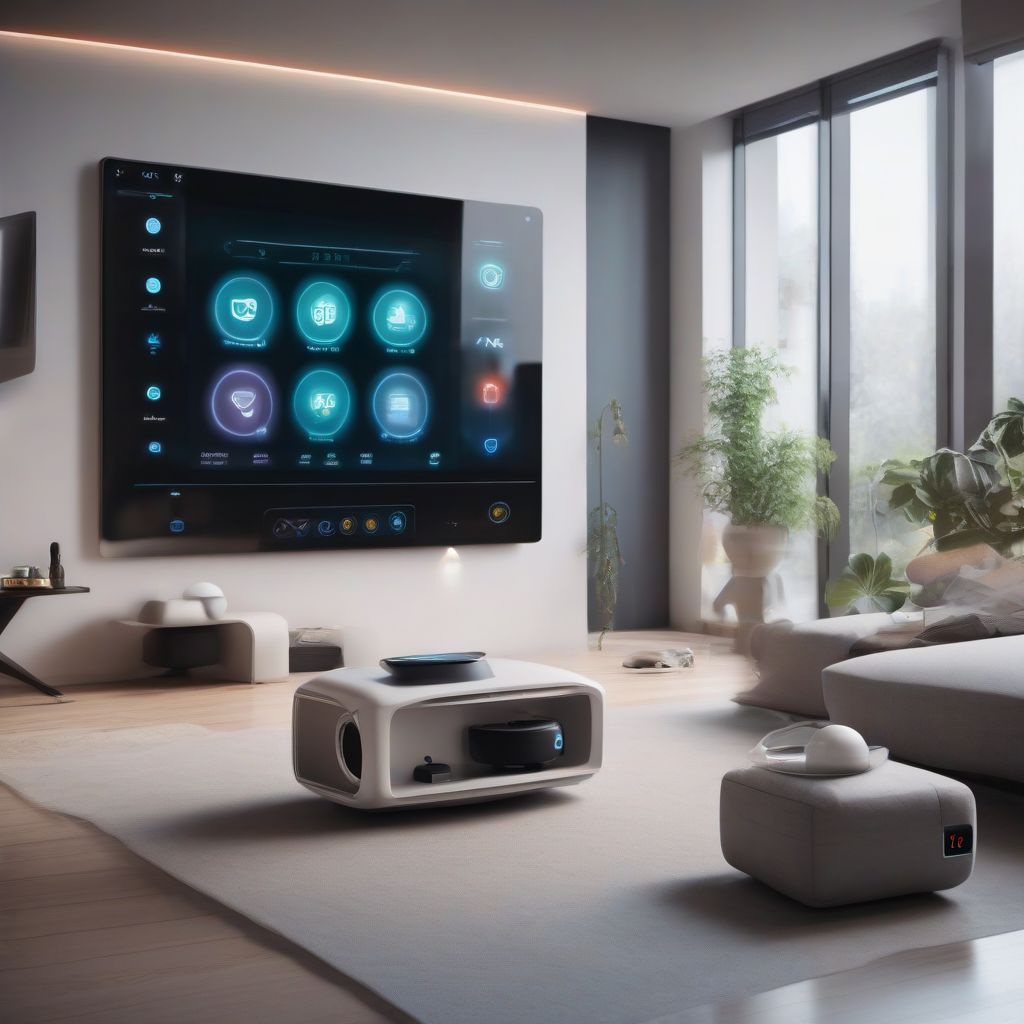Imagine this: you’ve just finished setting up your dream smart home. Lights respond to your voice, the thermostat adjusts itself, and your favorite playlist starts with a simple command. But then, a few months later, a new technology emerges, leaving your once cutting-edge setup feeling outdated.
This scenario is a common fear among those venturing into the world of home automation. Thankfully, with a little foresight and planning, you can “future-proof” your system, ensuring it remains relevant and adaptable for years to come. This comprehensive guide will delve into the strategies and principles to help you achieve just that.
Understanding the Importance of Future-Proofing
The world of technology is a rapidly evolving landscape. What’s considered state-of-the-art today might be obsolete tomorrow. This constant evolution is especially true for home automation, where new devices, protocols, and features are constantly emerging. Future-proofing your smart home is essential to avoid:
- Premature Obsolescence: Investing in a system that quickly becomes outdated can lead to frustration and the need for costly replacements or upgrades.
- Limited Functionality: As technology progresses, newer devices and features might not be compatible with older systems, limiting your options and the overall functionality of your smart home.
- Interoperability Issues: A future-proof system should seamlessly integrate with a wide range of devices and platforms, regardless of brand or technology.
- Security Risks: Outdated systems are often more vulnerable to security breaches. Future-proofing involves choosing systems with robust security features and regular updates.
Key Considerations for a Future-Proof Home Automation System
Building a smart home that stands the test of time requires careful consideration of various factors. Here’s what you need to keep in mind:
1. Choose a Flexible and Scalable Platform
The foundation of your smart home lies in its central hub or platform. Opting for a platform that’s open, flexible, and scalable is crucial. This means:
- Interoperability: The system should be compatible with a wide range of devices and protocols, including Wi-Fi, Bluetooth, Zigbee, and Z-Wave, ensuring you’re not limited to a single brand or ecosystem.
- Scalability: As your needs grow, your home automation system should easily accommodate new devices and features without requiring a complete overhaul. Choose a platform that allows for expansion and customization.
- Regular Updates: A future-proof system should receive regular software and firmware updates to maintain compatibility, improve performance, and enhance security.
2. Prioritize Open Standards and Protocols
Proprietary protocols can limit your options and lead to compatibility issues down the line. Opting for devices and systems that adhere to open standards, such as Matter, Thread, or Zigbee, ensures greater interoperability and future-proofing. Open standards foster a more competitive market, leading to greater innovation and a wider range of compatible devices.
3. Invest in Quality and Durability
While it’s tempting to opt for the cheapest options, investing in high-quality devices from reputable brands can save you money in the long run. Durable devices are less likely to break down or become obsolete quickly, ensuring your smart home remains functional and reliable for years to come.
4. Plan for Network Expansion and Reliability
A robust and reliable network forms the backbone of any smart home. Consider the following:
- Network Coverage: Ensure your Wi-Fi network provides adequate coverage throughout your home, especially in areas where you plan to install smart devices. Consider mesh Wi-Fi systems for larger homes or areas with weak signal strength.
- Bandwidth Considerations: As you add more devices to your network, ensure your internet plan offers sufficient bandwidth to handle the increased data load without compromising performance.
- Wired vs. Wireless: While wireless connections offer convenience, consider wired connections for devices requiring high bandwidth or real-time communication, such as security cameras or streaming devices.
5. Embrace Modular Design and Upgrades
A future-proof smart home should be adaptable and easy to upgrade. Choose a modular approach:
- Modular Devices: Opt for individual devices that can be easily replaced or upgraded without affecting the entire system.
- Component-Based Upgrades: Instead of replacing the entire system when a new technology emerges, choose systems that allow for component-based upgrades.
6. Consider Future Needs and Lifestyle Changes
When designing your smart home, anticipate future needs and potential lifestyle changes:
- Family Growth: If you plan on expanding your family, choose a system and devices that can adapt to accommodate new members.
- Aging in Place: Consider features that can aid independent living for seniors, such as voice control, automated lighting, and remote health monitoring.
- Changing Technology: Stay informed about emerging trends and technologies in the home automation industry. Subscribe to industry publications, follow reputable blogs, and attend technology conferences to stay ahead of the curve.
7. Don’t Overlook Security
Security should be a paramount concern in any smart home setup. Implement these measures:
- Strong Passwords: Use strong, unique passwords for all your devices and accounts. Consider a password manager to keep track of your credentials securely.
- Two-Factor Authentication: Enable two-factor authentication whenever possible for an extra layer of security.
- Regular Software Updates: Keep all your devices and systems updated with the latest security patches to mitigate vulnerabilities.
- Network Segmentation: Create a separate network for your smart home devices to isolate them from your primary network and minimize potential risks.
 Future-Proof Smart Home
Future-Proof Smart Home
Conclusion: Embracing the Evolving Landscape of Smart Homes
Building a future-proof home automation setup is an ongoing process that requires careful planning, research, and a willingness to adapt to evolving technologies. By embracing open standards, prioritizing quality and flexibility, and staying informed about industry trends, you can create a smart home that not only meets your current needs but also stands the test of time, seamlessly integrating with future advancements and enhancing your living experience for years to come.
Do you have any questions about future-proofing your home automation setup? Share your thoughts and experiences in the comments below! And if you found this guide helpful, don’t forget to share it with others who might benefit from it!
[amazon bestseller=”Smart Home Hub”]
